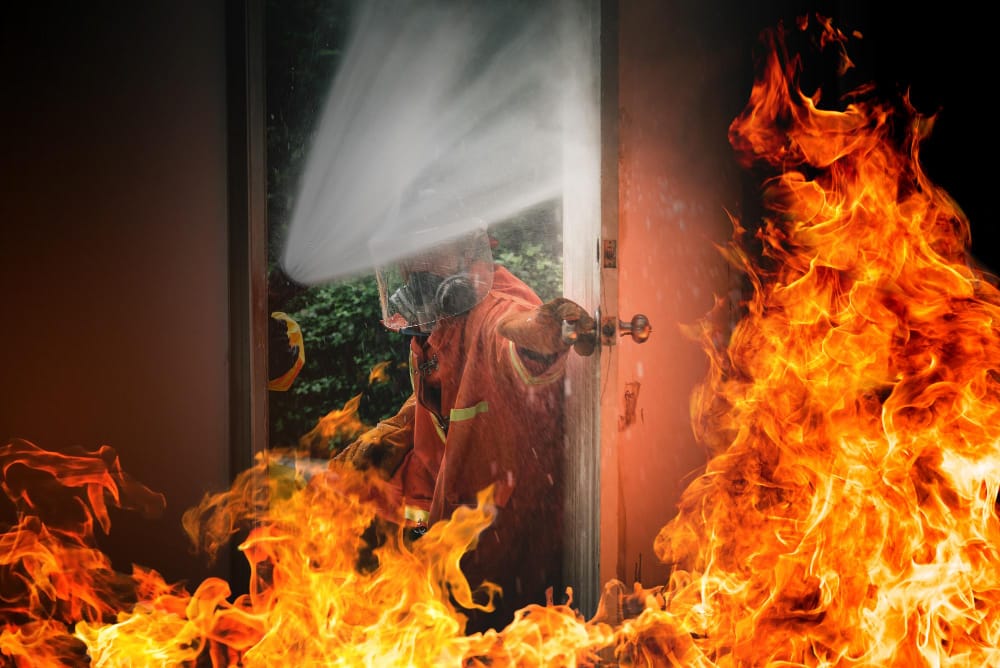When it comes to fire safety, most people think of alarms, sprinklers, or fire extinguishers. But there’s another critical layer of protection many building owners overlook fire stopping. If you’ve found yourself searching what is fire stopping, you’re likely concerned about how to better protect your building from the rapid spread of fire through walls, floors, or hidden gaps. This article breaks down what fire stopping is, why it matters, how it works, and where it’s most commonly applied, so you can understand its role in keeping your property and occupants safe.
Table of Contents:
- What is Fire Stopping?
- Why is Fire Stopping Important?
- How Fire Stopping Works
- Where Fire Stopping Is Commonly Used
- Conclusion
What is Fire Stopping?
Fire stopping is a passive fire protection method designed to seal the small but critical openings in a building places where fire, smoke, and toxic gases could otherwise pass through. These openings often exist around pipes, electrical conduits, HVAC ducts, or cables that penetrate fire-rated walls and floors. Without proper fire stopping, these gaps become vulnerable pathways for flames to spread rapidly from one room or level to another.
The core idea behind fire stopping is containment. By using specialized materials like fire-resistant sealants, wraps, collars, or boards, these openings can be blocked in a way that resists heat and helps maintain the fire resistance rating of the overall structure. Fire stopping doesn’t extinguish flames like sprinklers or alarms it quietly holds the line, buying time for people to escape and for firefighters to respond.
Why is Fire Stopping Important?
Fires spread fast especially in modern buildings filled with hidden utility paths and open cavities. Without fire stopping, even a small gap around a cable or pipe can allow flames, smoke, and heat to move from one area to the next in just minutes. This puts lives at risk, accelerates property damage, and can overwhelm a building’s active fire systems before they have time to respond.
Effective fire stopping protects what matters most: people, property, and time. It helps contain a fire to its origin, slowing its progress through fire-rated walls and floors. This means safer evacuation for occupants, better access for emergency responders, and reduced risk of structural collapse. For commercial or multi-residential buildings, proper fire stopping is also a code requirement—non-compliance can lead to serious legal and insurance consequences.
How Fire Stopping Works
Fire stopping works by sealing any gaps, cracks, or penetrations in fire-rated walls or floors using materials that are tested to withstand high heat. When a fire occurs, these materials react in different ways depending on their type: some expand to fill the space, others remain stable to block heat and flames, and some are designed to form a char that slows down fire penetration.
A complete firestop system typically includes a combination of components working together:
- Fire-resistant sealants to block gaps
- Intumescent wraps and collars that expand when exposed to heat
- Backing materials like mineral wool that help support the system
Each is selected based on the type of opening and materials passing through it like metal pipes, plastic conduits, or cable bundles.
The goal is to preserve the fire barrier’s integrity for a specified period usually 1 to 4 hours giving people time to evacuate and allowing first responders to contain the fire before it spreads further. Fire stopping is always part of a larger system that includes fire-rated walls, ceilings, and floors. It’s not just about the sealant it’s about how the whole assembly works together to resist fire.
Where Fire Stopping Is Commonly Used
Common areas where fire stopping is applied include:
- Around plumbing pipes or electrical conduits passing through walls or floors
- In cable trays or data rooms with large bundles of wiring
- Around ducts for HVAC systems
- At expansion joints in concrete or masonry walls
- In fire-rated walls separating units in multi-family housing, office towers, or healthcare facilities
There are also different fire stopping approaches depending on the type of gap or penetration. For example:
- Sealing openings where services pass through walls or floors
- Filling linear joints between building sections
- Creating perimeter barriers where floors meet curtain walls
Each of these scenarios may call for a different firestop solution, but the objective remains the same: to contain fire and smoke at the point of origin and maintain the integrity of the fire-rated barrier.
Conclusion
If you’ve ever asked yourself what is fire stopping, chances are you’re looking for ways to strengthen your building’s fire protection strategy. As we’ve explored, fire stopping plays a quiet but critical role in slowing the spread of fire through walls, floors, and hidden gaps giving people more time to escape and limiting damage. It’s not just a construction detail it’s a life-saving layer of defense that many buildings overlook.
Whether you’re working on a new build or upgrading an existing property, proper fire stopping should never be left to chance. Reach out to Ener-Spray today for expert guidance and tailored fire protection solutions that meet code, improve safety, and help safeguard what matters most.
